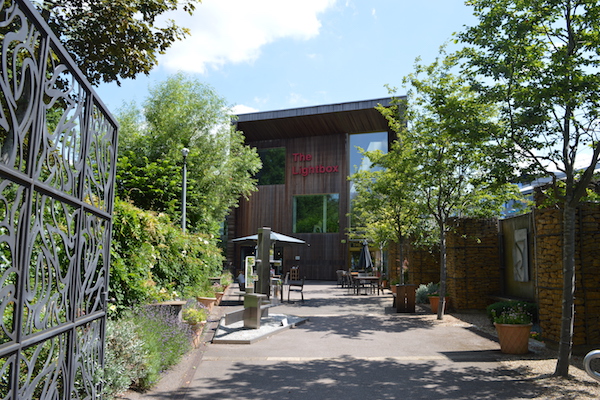
With the health of the nation being pushed to the forefront thanks to the coronavirus, it has never been more important to understand what is going on, how the NHS is dealing with the unprecedented demand on their precious resources and how businesses trying to get back to some semblance of normality should be dealing with the protection of their business and their staff.
Whilst the mainstream media is full of critics and sniping, it would benefit us all to remember that this is a brand new virus, that such a pandemic has never hit us before and there is no template for how to deal with it.
We thought we would go straight to the top and sat down with Suzanne Rankin, the Chief Executive of Ashford and St Peters NHS Foundation Trust, and National Director of NHS Test & Trace, to learn a little more of her background and how this system is working.
I am the Chief Executive of Ashford and St Peter’s Hospitals NHS Foundation Trust. We are the largest provider of acute hospital services in Surrey, serving a population of more than 410,000 people in the boroughs of Runnymede, Spelt- horne, Woking and parts of Elmbridge, Hounslow, Surrey Heath and beyond. The Trust has around 4000 team members delivering care across 2 large hospital sites and other community and local healthcare facilities and has a turnover of around £330M per year. I have been the CEO since 2014 and prior to that I was the Chief Nurse at the Trust from 2010.
I began my nursing and management career with the Royal Navy, including deployment during the 1990 Gulf War; a spell as Senior Nursing Officer at NATO Headquarters in Lisbon; and Nursing Officer in charge of the Trauma and Orthopaedic Unit at the former Royal Hospital Haslar in Gosport, Hampshire. I graduated with an MA in Defence Studies including advanced command and staff training from the Joint Services Command and Staff College in 2005. After which I joined the Ministry of Defence in 2008 where I supported and advised the Surgeon General on nursing leadership and professional matters, and spent time in Iraq and Afghanistan. Prior to joining the Trust I was Deputy Chief Nurse for NHS South Central Strategic Health Authority.
I am currently seconded to NHS Test and Trace as the National Director for Contain for a 3 month period. NHS Test and Trace has been operating since the end of May 2020 and has been established to break chains of COVID-19 transmission to enable people to return to a more normal way of life. This will be achieved through the delivery of 4 strategic objectives:
1. Finding and isolating people who have COVID and their close contacts through testing and contact tracing.
2. Local community action to prevent and manage outbreaks enabled via the Contain Framework.
3. Enabling individuals, businesses and public services to understand and manage risk.
4. Building a trusted NHS organisation with and for citizens by building awareness understanding and trust.
The main focus on my current work is around the 2nd of the 4 objectives, delivering the Contain Framework and supporting Local Authorities and Directors of Public Health with Public Health England’s support identify, manage and contain local outbreaks and clusters of COVID-19 infection.
The framework sets out how national and local partners will work with the public at a local level to prevent, contain and manage outbreaks. Successful management of local outbreaks is a core element of NHS Test and Trace’s ambition to break the chains of COVID-19 transmission to enable people to return to and maintain a more normal way of life.
This national framework will support local decision-makers by clarifying their responsibilities and empowering them to take preventative action and make strong decisions locally, supported by mechanisms that safeguard key national assets and interests.
Managing outbreaks is very dynamic. The overarching aim is to empower local decision-makers to act at the earliest stage for local incidents, and ensure swift national support is readily accessible where needed. Continuous improvement is critical as we learn more about managing the virus alongside existing infectious disease and emergency response arrangements. We will continue to communicate and work with local, regional and national teams to develop structures and ways of working, working alongside and within existing emergency response mechanisms and maximising their effectiveness.
Each Upper Tier Local Authority has a local outbreak plan developed setting out how partners should work together to implement the plans and take a preventative approach. COVID-19 local outbreak plans are based on the tried and tested practice of preventing and containing outbreaks in individual settings like workplaces and care homes, enhanced with a broader range of partners, capacity, communications and governance.
Appendix 8 (Page 37) of the below mentioned Surrey Local Outbreak Control Plan set’s out guidance for work- places and employers. It recognises the diversity of business and workplaces across Surrey and acknowledges the need to protect employees, visitors and customers while restarting the local economy as quickly as possible, and to identify and eliminate all cases of the virus in workplaces. It includes links to key guidance which l have included below.
The aim is to enable employers, employees and workplaces to take the steps required to be COVID safe and operate as near to normal as is possible.
As part of the national containment framework ‘action cards’ have been developed for individual settings such as workplaces or institutional settings. These action cards provide details of how and who they should contact in the event they suspect they have a coronavirus outbreak in their setting.
The action cards also provide clear guidance on how individual settings can help prevent the infection by applying existing guidance on:
• social distancing
• sticking to the risk-assessed safe working advice
• cleaning hands regularly
• disinfecting objects, surfaces and common touch points
• cohorting the workforce and minimising contacts outside of the household
Whilst I am missing my colleagues at the Trust enormously, the work I am currently engaged in feels very important in terms of the health and wellbeing of citizens and, significantly, the need to support the economy and business get back on its feet since I know that health and wellbeing is as much predicated on economic security and resilience as it is in healthcare and disease control. This is a difficult line to tread, COVID-19 is a new virus and whilst much has been learned there is still more to be done to fully understand the nature of transmission and the underlying epidemiology.
Naturally NHS Test and Trace is under huge scrutiny and rightly so as so much depends on its success. My impression is that this fledging organisation is absolutely focused on delivering it’s vision at pace and scale, led by the energetic and passionate Baroness Dido Harding who is fearlessly facing into the challenges ahead and I feel privileged to be a part of it, to be representing my partners in Surrey and to be learning and shaping the approach in collaboration with local authority leaders, Directors of Public Health, Public Health England, health protection teams and communities.
I am working alongside a diverse and professional team who have come together from across the public and private sectors and who are working tirelessly to put in place a robust, effective and sustainable national system for test and trace essentially from scratch in order to support citizens and businesses return to their near normal lives as possible – it’s impressive!
Just to give a sense of what has actually being achieved since NHS Test and Trace stood up on May 28th the figures reported from July 23rd are as follows:
-
2,320,229 people were newly tested under pillars 1 and 2
-
38,772 new people have tested positive for coronavirus (COVID-19)
-
38,877 people had their case transferred to the contact-tracing system, of whom 29,962 (77.1%) were reached and asked to provide details of their recent close contacts
-
202,781 people were identified as coming into close contact with someone who has tested positive. Of these, 169,546 (83.6%) were reached and asked to self-isolate
LINKS TO ADDITIONAL INFORMATION:
Surrey’s Local Outbreak Control Plan is here: www.surreycc.gov.uk/data/assets/pdf
www.surreycc.gov.uk/__data/assets/pdf_file/0005/229370/20200630- Surrey- Local-Outbreak-Control- Plan-Test-Trace- v1.0-PUBLISHED.pdf
https://www.gov.uk/guidance/nhs-test-and-trace-workplace-guidance
www.gov.uk/guidance/working- safely-during-coronavirus-covid-19/ the-visitor-economy
www.gov.uk/government/publications/covid-19-guidance-for-food-businesses/guidance-for-food- businesses-on-coronavirus-covid-19






